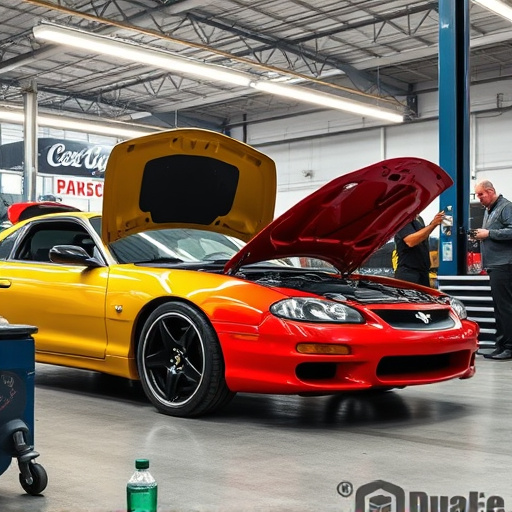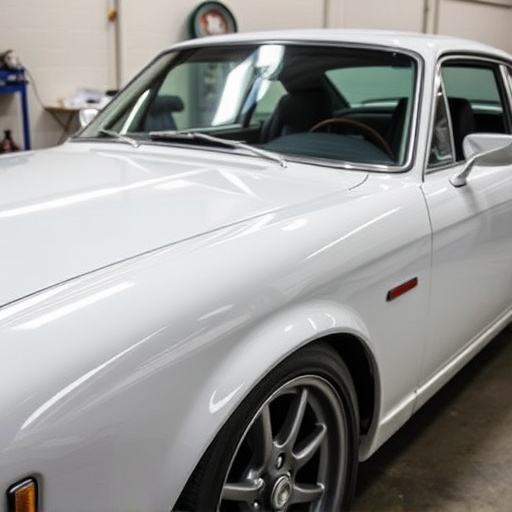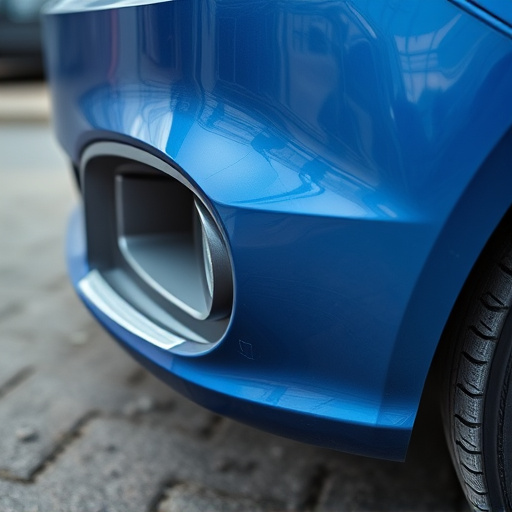The Mercedes Rollover Protection System (ROPS) uses advanced sensors and algorithms to detect imminent rollovers, deploying side airbags and securing the vehicle structure to minimize injuries. This technology, combined with expert collision repair services for optimal fender repair and bodywork, significantly enhances passenger safety and survival rates in challenging driving conditions.
Mercedes-Benz is renowned for its cutting-edge safety features, and at the forefront is the innovative Rollover Protection System (RPS). This life-saving technology employs sophisticated crash detection algorithms to identify imminent rollovers, swiftly activating structural components to enhance occupant safety. In this article, we explore Mercedes’ RPS, delving into the underlying crash detection algorithms and examining the brand’s comprehensive rollover prevention strategy, underscoring its crucial role in modern automotive safety.
- Mercedes Rollover Protection System: A Lifesaving Feature
- Crash Detection Algorithms: How They Work in Mercedes
- Safety Innovations: Mercedes' Rollover Prevention Strategy
Mercedes Rollover Protection System: A Lifesaving Feature

The Mercedes Rollover Protection System (ROPS) is a groundbreaking feature designed to safeguard drivers and passengers in the event of a rollover collision. This innovative system uses advanced algorithms and sensors to detect imminent rollovers, triggering a series of measures to minimize the risk of severe injuries or fatalities. By swiftly inflating side airbags and rigidly securing the vehicle’s structure, ROPS significantly enhances survival rates during these high-risk accidents.
This lifesaving technology is particularly crucial for those who frequently drive on challenging terrain or face unpredictable road conditions. The system’s ability to anticipate and respond to rollover scenarios makes it a standout feature in the automotive safety landscape. When paired with top-notch collision repair shop services, ensuring proper fender repair and car bodywork services, the Mercedes ROPS further contributes to maintaining optimal vehicle performance and passenger safety.
Crash Detection Algorithms: How They Work in Mercedes

Mercedes has pioneered advanced safety technologies, with their Rollover Protection System (RPS) being a key feature in preventing serious accidents. At the heart of this system is an intricate network of crash detection algorithms designed to identify imminent collisions. These algorithms analyze data from various sensors integrated into the vehicle’s structure, including accelerometers and gyroscopes. By continuously monitoring changes in speed and direction, these sensors can predict a potential rollover or front-end collision with remarkable accuracy.
When a possible crash is detected, the RPS swiftly activates a series of safety measures to protect occupants. This includes the deployment of airbags, the tightening of seatbelts, and in some cases, the extension of side impact protection bars. The efficiency of these algorithms lies in their ability to differentiate between routine movements and sudden, hazardous situations, ensuring that the Mercedes’ safety features are deployed only when necessary, thereby minimizing false alarms while maximizing passenger security. This advanced technology is a testament to Mercedes’ commitment to providing top-notch rollover protection for its vehicles, setting new standards in automotive safety.
Safety Innovations: Mercedes' Rollover Prevention Strategy

Mercedes has long been at the forefront of automotive safety innovations, and their Rollover Protection System (RPS) is a testament to this. This cutting-edge technology is designed to detect and mitigate potential rollover accidents, utilizing a network of sensors and algorithms to assess vehicle dynamics in real time. The RPS actively intervenes by deploying structural reinforcements and adjusting the vehicle’s stability control to minimize the risk of rollovers, particularly in challenging driving conditions.
The system integrates seamlessly with Mercedes’ advanced driver-assistance systems (ADAS), allowing for a proactive approach to safety. By continuously monitoring factors like speed, steering inputs, and road conditions, the RPS can predict and respond to scenarios that might otherwise lead to a rollover. This proactive safety measure not only enhances passenger protection but also reduces the need for extensive auto repair, as it aims to prevent damage by actively managing the vehicle’s stability during critical moments.
The Mercedes rollover protection system, integrated with advanced crash detection algorithms, showcases the automotive industry’s commitment to enhancing passenger safety. By leveraging sophisticated sensors and predictive analytics, these systems can proactively detect imminent rollovers and deploy countermeasures, significantly reducing the risk of severe injuries or fatalities. As Mercedes continues to refine its safety innovations, drivers can feel assured that they are protected by some of the most cutting-edge technology available on the road today.













